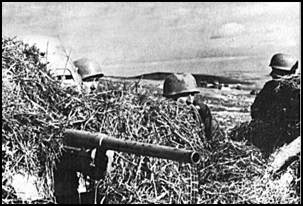
Saturday, May 1, 1943
In Tunisia... US forces complete the occupation of Hill 609 in "Mousetrap Valley." The Axis defenses hold American attempts to advance further.
Sunday, May 2, 1943
Over Occupied France... British Mosquito bombers raid the railway yards at Thionville in Lorraine.
Over Britain... German Dornier bombers lay mines off the estuaries of Thames and Humber.
In the Baltic... The German transport liner Gneisenau is sunk by a British mine laid by RAF aircraft.
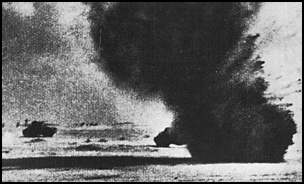
Monday, May 3, 1943
In Tunisia... The US 1st Division break out of "Mousetrap Valley" and capture Mateur. An improvised Axis defensive line prevents further progress.
From Washington... US General Devers is appointed to Commander in Chief of the American European Theater Command after General Andrews is killed in an airplane accident.
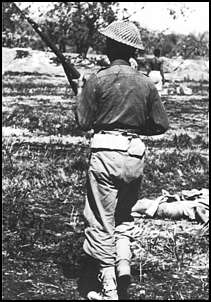
Tuesday, May 4, 1943
In Burma... Japanese forces infiltrate between Buthidaung and Maungdaw, disrupting British communications.
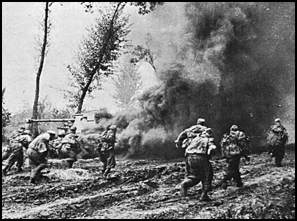
Wednesday, May 5, 1943
On the Eastern Front... In the Caucasus, the Red Army advance further into the Kuban Peninsula where the German 17th Army continues to maintain a foothold. They capture Krymsk and Neberjaisk.
In Tunisia... British forces recapture Djebel Bou Aoukaz late in the day. The British 5th Corps is now commanded by Horrocks and includes the 6th and 7th Armored Divisions and the 4th Indian Division.
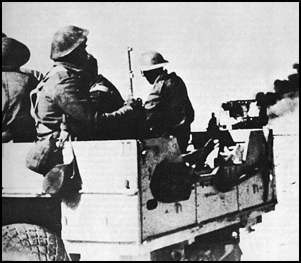
Thursday, May 6, 1943
In Tunisia... The British 5th Corps breaks through the Axis front and advances toward Tunis. The German 15th Panzer Division is destroyed in this new attack that is supported by massive artillery and air bombardment. Farther north, US forces advance on three axes toward Bizerta, Ferryville and Protville. The Free French 19th Corps approaches Pont du Fahs.
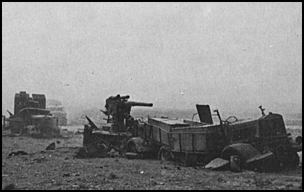
Friday, May 7, 1943
In Tunisia... Tunis and Bizerta are both captured in the afternoon by British and American forces, respectively. The Axis defenses can no longer contain the Allied pressure.
In the Solomon Islands... Americans lay mines in the waters around New Georgia to prevent Japanese supplies reaching the island.
In Burma... The Japanese force the British to withdraw from Buthidaung. The city is occupied by the Japanese.
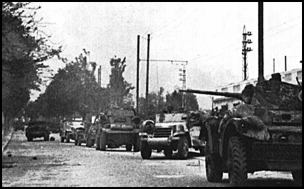
Saturday, May 8, 1943
In Tunisia... Axis forces are attempting to withdraw to the Cape Bon Peninsula. During the night (May 8-9), however, the British 6th Armored Division drives from Hammam Lif toward Hammamet, disrupting the retreating Axis columns.
In the Solomon Islands... Three Japanese destroyers are sunk by the American mines surrounding New Georgia Island.
Sunday, May 9, 1943
In Britain... A German Ju88, fitted with the new Liechtenstein BC radar set, lands in Scotland. It has been flown there by a British intelligence agent. The analysis of this new night-fighter equipment assists the British strategic bombing effort.
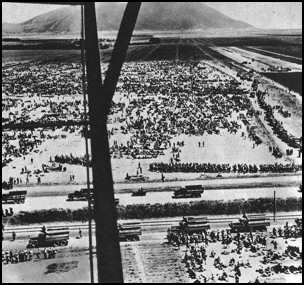
Monday, May 10, 1943
In Tunisia... The last organized Axis resistance is eliminated. Large scale surrenders, of Axis troops, begin.
From Berlin... Hitler approves Operation Citadel, the attack on the Kursk salient, despite expressing misgivings and news of Soviet defensive preparations.
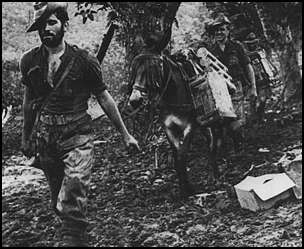
Tuesday, May 11, 1943
In Burma... The British 26th Division pulls back from Maungdaw. This marks the end of the British Arakan campaign. They have suffered 3000 killed and seriously wounded. The Japanese have experienced less than half that number of casualties in the campaign. Furthermore, British morale is low and the health of the troops is poor.
In the Aleutian Islands... The US 7th Division (commanded by General Brown) lands on Japanese occupied Attu Island. Admiral Kinkaid's Task Force 16 supports the operation. The supporting naval forces include 3 battleships, 1 escort carrier and numerous cruisers and destroyers. Once ashore, the American troops encounter difficulties advancing inland due to Japanese resistance and difficult terrain.
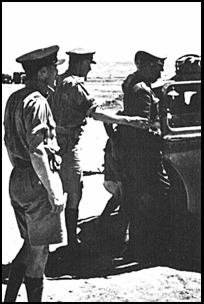
Wednesday, May 12, 1943
In Tunisia... General von Arnim surrenders to the Allies. Italian General Messe is promoted to Field Marshal by Mussolini in hopes of encouraging him to continue fighting.
In the Solomon Islands... Admiral Ainsworth leads 4 cruisers and 7 destroyers in two groups to shell Vila and Munda. American ships lay more mines near New Georgia Island.
In Washington... The Trident Conference. Roosevelt and Churchill meet to discuss strategy. The Americans seek a commitment to an invasion of western Europe. The British seek a commitment to an invasion of Italy and possibly the Balkans.
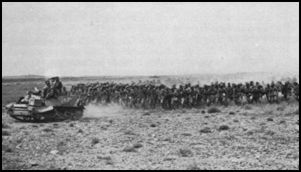
Thursday, May 13, 1943
In Tunisia... Italian Field Marshal Messe orders the remaining German and Italian troops to surrender. About 250,000 Axis troops have been taken prisoner in the past few days.
In the Aleutian Islands... US forces now outnumber the Japanese defenders on Attu Island by 4 to 1. However, the Americans are unable to extend their front beyond the landing areas. Bad weather and the terrain hinder progress.
In Washington... The Trident Conference continues.
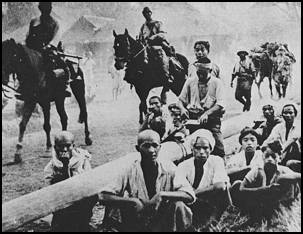
Friday, May 14, 1943
In Burma... The Japanese occupy Maungdaw following the British withdrawal (May 11th).
In Washington... The Trident Conference continues.
Saturday, May 15, 1943
On the Eastern Front... A minor German attack in the Leningrad area fails to make any progress.
In the Aleutian Islands... An American attack at Massacre Bay fails. A second effort to the north makes some progress although with casualties from friendly fire as well as Japanese resistance.
In Moscow... The Soviet leadership decides to dissolve the Comintern. In part, this decision is aimed at influencing opinion in Britain and the United States.
In Burma... British General Slim is appointed to command the 14th Army. Generals Irwin and Lloyd have been relieved.
In Washington... The Trident Conference continues.
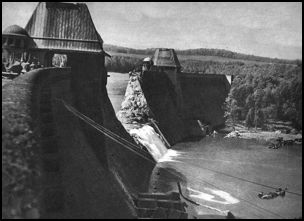
Sunday, May 16, 1943
Over Germany... During the night (May 16-17), a specially trained and equipped RAF bomber squadron (No. 617) carries out successful precision bombing raids on the dams on the Mohne and Eder Rivers. A third target, the Sorpe dam, is not attacked. The targets are believed to supply the majority of electricity used in the Ruhr industrial area and a significant quantity of the water. However, 8 of the 19 aircraft are lost and the damage is far less than had been hoped.
In the Aleutian Islands... On Attu, the Japanese are forced to pull back as the Americans continue their attacks near Holtz Bay.
In Occupied Poland... The Warsaw Ghetto Uprising. The synagogue is blown up. Stroop, the SS commander responsible for putting down the uprising, claims that since the uprising began, on April 19, 14,000 Jews have been killed in the ghetto and another 40,000 have been sent to Treblinka to be killed.
On the Eastern Front... In the Caucasus, the German 17th Army launches counterattacks from its foothold in the Kuban Peninsula. Soviet forces hold.
In Washington... The Trident Conference continues.
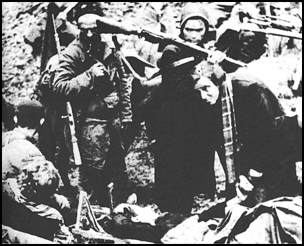
Monday, May 17, 1943
In Occupied Yugoslavia... Operation Schwarz. The Germans launch their fifth major offensive against Tito's partisans. German forces are commanded by General Luters. They include the SS Division Prinz Eugen, 1st Mountain Division and the 4th Brandenburg Regiment. The latter two units have been deployed in the area for this operation. Other Axis units hold an encircling ring. In total, there are about 120,000 Axis troops engaged against, at most, 20,000 partisans led by Tito.
On the Eastern Front... In the Caucasus, the German 17th Army continues to counterattack. Soviet forces continue to hold the offensive.
In Washington... The Trident Conference continues.
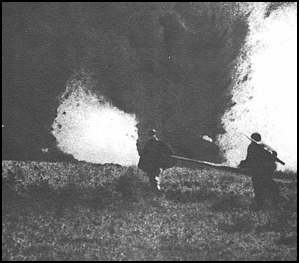
Tuesday, May 18, 1943
On the Eastern Front... In the Caucasus, the German 17th Army continues to counterattack. Soviet forces continue to hold the offensive.
In the Aleutian Islands... On Attu, American forces advancing from the north and south link up. They reorganize for the drive on what is believe to be the final Japanese positions on the approach to Chicagof Harbor.
In the United States... A United Nations Food Conference begins in Hot Springs, Virginia. The conference continues until June 3rd.
In Washington... The Trident Conference continues.
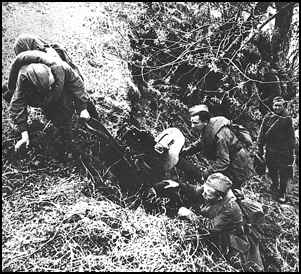
Wednesday, May 19, 1943
On the Eastern Front... In the Caucasus, the German 17th Army continues to counterattack. Soviet forces continue to hold the offensive.
In the Aleutian Islands... On Attu, American forces advance along Clevesy Pass toward Chicagof.
In Washington... The Trident Conference continues.
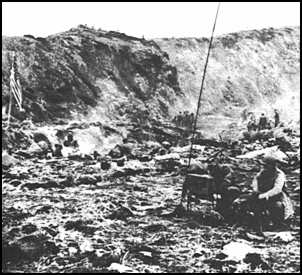
Thursday, May 20, 1943
In the Aleutian Islands... On Attu, fighting continues in the Clevesy Pass. Japanese forces hold the high ground and offer determined resistance to the American attacks.
On the Eastern Front... In the Caucasus, the German 17th Army continues to counterattack. Soviet forces continue to hold the offensive.
In Washington... The Trident Conference continues.
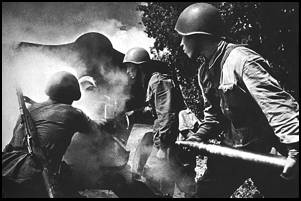
Friday, May 21, 1943
On the Eastern Front... In the Caucasus, the German 17th Army continues to counterattack. Soviet forces continue to hold the offensive.
In Alexandria... Admiral Godefroy, commanding the French squadron interned in Alexandria, chooses to join the Allies.
In the United States... The Mississippi river floods. In total, 150,000 people become homeless.
In the Aleutian Islands... On Attu American forces make some progress along the Clevesy Pass.
In Washington... The Trident Conference continues.
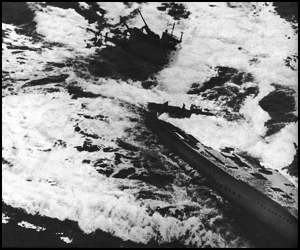
Saturday, May 22, 1943
From Berlin... Admiral Dontiz orders all U-boat patrols in the north Atlantic to break off operations against the convoys. The submarine losses have grown too high. This decision effectively ends the battle of the Atlantic with an Allied victory. Some boats are moved south to the Caribbean and to waters off the Azores.
On the Eastern Front... In the Caucasus, the German 17th Army continues to counterattack. Soviet forces continue to hold the offensive.
In the Aleutian Islands... On Attu American forces make some progress along the Clevesy Pass.
In the United States... Mississippi river flooding continues. In total, 150,000 people become homeless.
In Washington... The Trident Conference continues.
Sunday, May 23, 1943
Over Germany... The Battle of the Ruhr. More than 2000 tons of bombs are dropped on Dortmund in the heaviest RAF Bomber Command raid to date.
On the Eastern Front... In the Caucasus, the German 17th Army continues to counterattack. Soviet forces continue to hold the offensive.
In the Aleutian Islands... On Attu American forces make some progress along the Clevesy Pass.
In the United States... Mississippi river flooding continues. In total, 150,000 people become homeless.
In Washington... The Trident Conference continues.
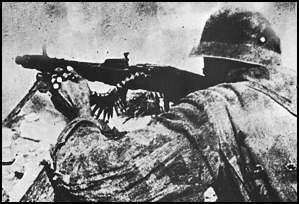
Monday, May 24, 1943
On the Eastern Front... In the Caucasus, the German 17th Army continues to counterattack. Soviet forces continue to hold the offensive.
In the Aleutian Islands... On Attu American forces make some progress along the Clevesy Pass. There is heavy fighting over Fish Hook Ridge.
In the United States... Mississippi river flooding continues. In total, 150,000 people become homeless.
In Washington... The Trident Conference continues.
Tuesday, May 25, 1943
In Washington... The Trident Conference ends. Roosevelt and Churchill, and their staffs, reach compromises on all of the significant differences. Among the decisions taken is the target date for the invasion of western Europe (D-Day) -- May 1, 1944. British General Morgan is appointed to prepare plans for the invasion. His is designated Chief of Staff to the Supreme Allied Commander (COSSAC).
On the Eastern Front... In the Caucasus, the German 17th Army continues to counterattack. Soviet forces continue to hold the offensive.
In the Aleutian Islands... On Attu American forces make some progress along the Clevesy Pass. There is heavy fighting over Fish Hook Ridge.
In the United States... Mississippi river flooding continues. In total, 150,000 people become homeless.
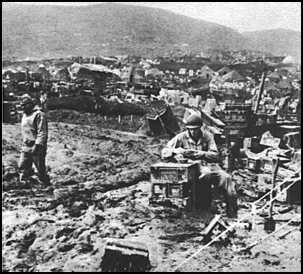
Wednesday, May 26, 1943
In the Aleutian Islands... On Attu American forces make some progress along the Clevesy Pass. There is heavy fighting over Fish Hook Ridge.
In Canada... Meat rationing is introduced throughout the country.
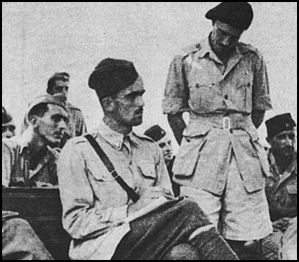
Thursday, May 27, 1943
In Occupied Yugoslavia... British officers are parachuted into occupied Yugoslavia in order to rendezvous with Tito's partisan forces in Montenegro, near Mount Durmitor. Tito's forces have been under attack by superior German, Italian and Bulgarian forces for ten days now and they are concentrating for a breakout. The desire to meet with the British representatives is one reason for the delay in attempting to disengage.
In the Aleutian Islands... On Attu American forces make some progress along the Clevesy Pass. Japanese are driven off of Fish Hook Ridge in heavy fighting. Also, Americans begin work on an airfield at Alexai Point.
From Washington... Churchill and American General Marshall leave for North Africa for talks with General Eisenhower on the Italian campaign. Churchill wants to exploit opportunities in the Mediterranean and to get Italy to surrender. Marshall wants to avoid commitments that will interfere with the invasion of western Europe that is now being prepared.
In Occupied France... The Comite National de la Resistance meets in Paris for the first time. The organization existance benefits de Gaulle's status with the Allies.
On the Eastern Front... In the Caucasus, the Soviets launch an attack on the positions of the German 17th Army in the Kuban peninsula. The German defenses hold.
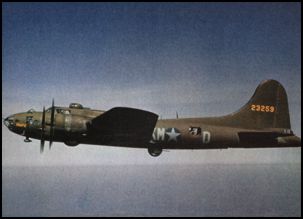
Friday, May 28, 1943
Over Italy... A reported 100 B-17 Flying Fortress bombers attack the oil refinery and shipping at Livorno (Leghorn).
Over Sicily... American P-40 and Marauder aircraft strike four airfields and encounter heavy anti-aircraft (flak) defenses.
In Washington... The Office of War Mobilization is established to coordinated production.
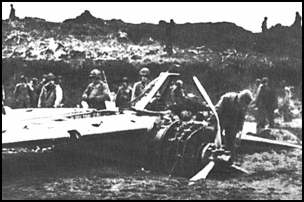
Saturday, May 29, 1943
In the Aleutian Islands... On Attu the Japanese mount a final attack on American forces established in Chicagof.
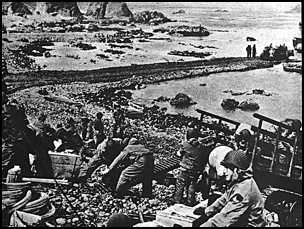
Sunday, May 30, 1943
In the Aleutian Islands... US forces complete the occupation of Attu Island. American losses are reported as 600 dead and 1200 wounded. Japanese losses are given as 2350 killed (including many suicides) and 28 wounded have been captured.
In Algiers... Free French leader de Gaulle visits for talks with General Giraud to reconcile their differences.
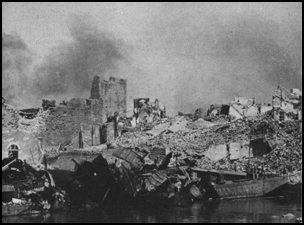
Monday, May 31, 1943
In the Mediterranean... Pantelleria is bombarded by a British cruiser and 2 destroyers. The city has been bombed several times in the past few days.
Copyright © 2018 Ralph Zuljan
